Which Defibrillator Should I Buy?
When every second counts, having a reliable defibrillator on hand can be the difference between life and death. Whether you're equipping a workplace, community center, school, or even your own home, choosing the right AED (Automatic External Defibrillator) can feel overwhelming with so many options on the market. This buying guide is here to simplify the process, helping you understand key features, regulatory considerations, and practical tips so you can make a confident, informed decision. From ease of use to maintenance requirements, we’ll walk you through everything you need to know to ensure you're ready when it matters most.
Types of Defibrillator
AEDs generally come in two forms: semi-automatic and fully automatic. Both types analyze the heart’s rhythm and determine whether a shock is needed, but they differ in how that shock is delivered. We also have specialist training defibrillators which enable prospective responders to experience practical training without delivering a defibrillation shock
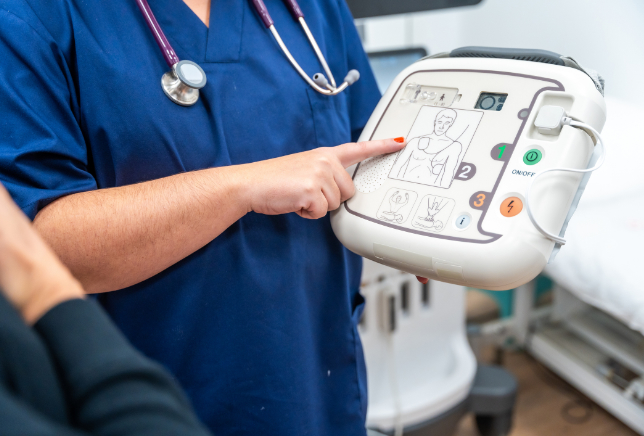
Semi-Automatic Defibrillators
Semi-automatic defibrillators require a bit more input and are better suited to users who have had training or healthcare professionals and first responders.
It calculates when the shock needs to be delivered and will prompt the user to press a button to administer it.
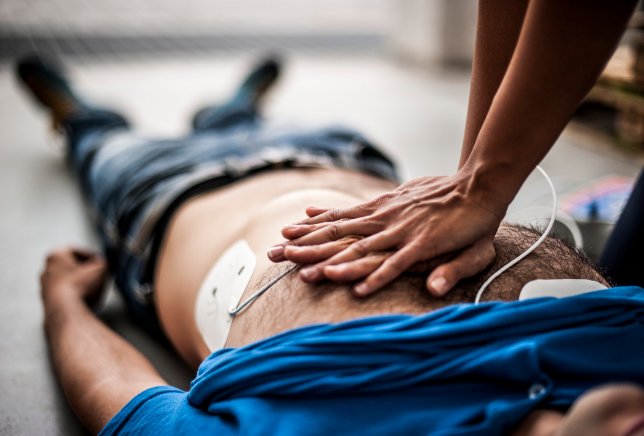
Fully Automatic Defibrillators
Fully automatic defibrillators require less input from the users and are ideal for use in public locations where they will be used by people that havent had training to use them.
They deliver the shock to the heart automatically without pressing any buttons or the need for intervention.
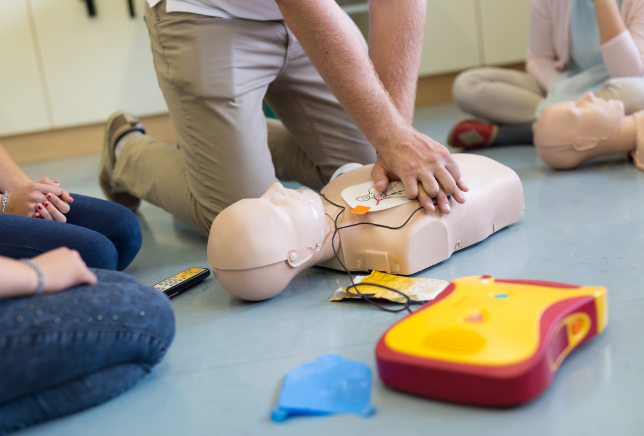
Training Defibrillators
Training defibrillators are intended to be used with training pads to allow users to experience practical training without delivering a defibrillation shock.
Many of units have a remote control that enables the trainer to simulate different events during training scenarios.
Things to consider when choosing an AED
When choosing an Automated External Defibrillator (AED), it’s essential to look beyond just the brand name or price tag. AEDs are life-saving devices that might one day be the difference between life and death so every feature, rating, and accessory matters. Whether you’re equipping a school, gym, community center, or outdoor venue, here are the key considerations to help you choose the right device for your needs.
Battery Life
Battery life is crucial not only for functionality but also for long-term maintenance costs. AED batteries typically have two lifespans to consider:
- Shelf life: How long the battery can be stored (uninstalled) before it begins to degrade.
- Standby life: How long the battery will remain functional once installed in the AED.
Most AED batteries offer a standby life of between 4 and 7 years. The longer the standby life, the less often you’ll need to purchase replacements something to keep in mind for budget-conscious buyers. Always check both shelf and standby life to plan ahead effectively.
Pad Life
Just like batteries, AED electrode pads also have a shelf life and standby life. Depending on the model, pads typically last from 1.5 to 5 years. After that, they must be replaced, whether they’ve been used or not.
Frequent pad replacement increases running costs, so opting for a device with longer-lasting pads is a smart move, especially in locations where the AED is unlikely to be used frequently but still must remain in constant readiness.
Adult / Child Use
While all AEDs are designed for adult use, not all are child-friendly. Children under 8 years old or under 25kg (around 55 pounds) require a lower energy shock. There are two solutions for child compatibility:
- Pediatric pads: These are designed to deliver a lower shock level and must be swapped in when treating a child.
- Child mode switch: Some AEDs have a built-in child mode that reduces the energy level automatically without having to swap pads over.
If your AED might be used on children (e.g., in schools, community centers, or sports clubs), child capability is a must-have feature.
Indoor vs Outdoor Use
Where you plan to use your defibrillator plays a significant role in selecting the right unit. Outdoor environments present unique challenges such as rain, dust, humidity, and extreme temperatures. Here’s where the IP rating (Ingress Protection rating) becomes critical.
- High IP rating: Offers strong resistance to dust and powerful water jets, making it ideal for outdoor or industrial use.
- Low IP rating: Suitable for controlled environments like offices or schools.
Make sure to pair your AED with an appropriate weatherproof cabinet or enclosure if it’s being stored outdoors. For more information on storing your defibrillator take a look at our article - How to safely store your defibrillator
Warranty
The length of a manufacturer's warranty is a good indicator of how much confidence they have in their product. AED warranties vary widely from as little as 1 year to as much as 10 years. A longer warranty can offer greater peace of mind, especially in public access settings or institutions with limited budgets for frequent replacements or repairs. If you're investing in an AED for long-term use, it’s worth prioritizing models with robust warranty coverage.
Additional Features
- Carry Case: Great for mobile use like events or sports. Choose between soft or hard cases for protection.
- User Prompts: Many AEDs guide users step-by-step, ideal for non-medical personnel.
- Self-Testing: Automatic checks alert you to expired pads or low batteries, keeping your AED always ready.
- Connectivity: Some units offer Wi-Fi or cellular updates for remote monitoring and fleet management.
Related Products
If you found this guide helpful we recommend having a look at these related products. We've handpicked these products becasue they complement the topics covered in this guide and each one has been carefully selected for its quality, features, and overall value money.

IPAD NFK200 Semi-Automatic Defibrillator
The iPAD NFK200 semi-automatic defibrillator allows switching between adult and paediatric modes with a simple button press, saving crucial time during the treatment of a sudden cardiac arrest. This unit provides clear visual and audio guidance, accompanied by an audible metronome to assist responders.
- Semi-automatic operation
- Defibrillator warranty: 7 years
- Battery stand-by life: 60 months (4 year warranty)
- Electrode pad life: 36 months
£780.00 inc VAT
£650.00 ex VAT
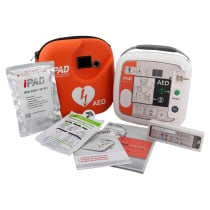
iPAD SP1 Fully Automatic Defibrillator
The iPAD SP1 fully automatic defibrillator features an adult / child mode button which means that only a single set of electrodes are required for the treatment of all cardiac arrest patients.
- Fully automatic operation
- Defibrillator warranty: 7 years + 3 years when registered
- Battery stand-by life: 60 months
- Electrode pad life: 24 months
£944.40 inc VAT
£787.00 ex VAT
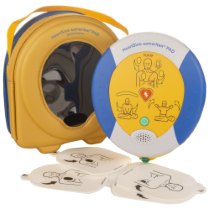
HeartSine Samaritan PAD 350P Defibrillator Trainer Unit
The HeartSine Samaritan PAD 350P trainer mimics the actual HeartSine defibrillator and comes with a handy remote control, allowing instructors to change between the different training scenarios.
- 6 pre-programmed training scenarios to choose from
- Suitable for both adult and paediatric training
This product is currently unavailable